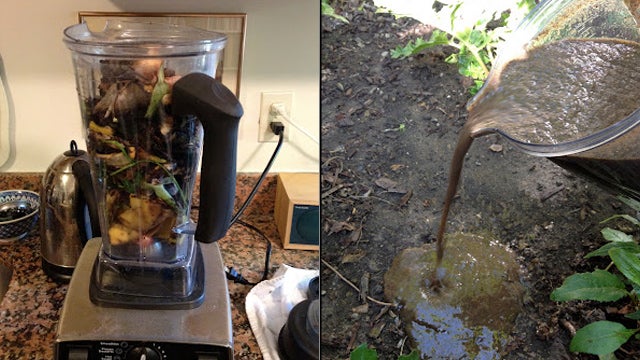Today we are going to talk about something a little different- composting!
For those who don’t know, composting is nature’s process of recycling decomposed organic materials into a rich soil known as compost. Just to name a few benefits, composting adds nutrients to plants and add nutrients to the soils by recycling waste, and helps to reduce landfill waste. Talk about a triple whammy!
While we try to encourage consumption of all of our fruits and vegetables as much as we can without throwing any way, some of them inevitably ends up in the bin such as apple cores, vegetable peels and fruit rinds. Not all food scraps can be composted, but it is safe to say all vegetable/fruit wastes including moody and ugly parts are compostable.
Simply find a bin that make it your compost bin and leave it under the kitchen sink for easy composting. Or if that’s not a viable option, here’s a little tip I want to share from Lifehacker.
CREATE AN INSTANT COLD COMPOST IN A BLENDER
Throw your food scraps in the blender for some instant compost! You can fill up the mixture with other plant scraps, newspapers, coffee grounds, old bread or anything made from flour, any grains (the list goes on! check out the nice little infographic below), add some water to just above the scraps and blend until smooth. Now that it’s like a puree consistency, spread it out in your garden, even mix it into the soil or mix in new soil if you’ve got some.

While this mixture isn’t technically compost yet, by breaking down the raw materials in a blender will help organic matter decompose faster.
Tip:
- A great way to get rid of the fruit flies is to freeze your scraps until they need to be blended!
Trust me, your garden will be reaping the rewards later! This is a great way to recycle waste such as your rotten fruits and vegetables!
-VS




